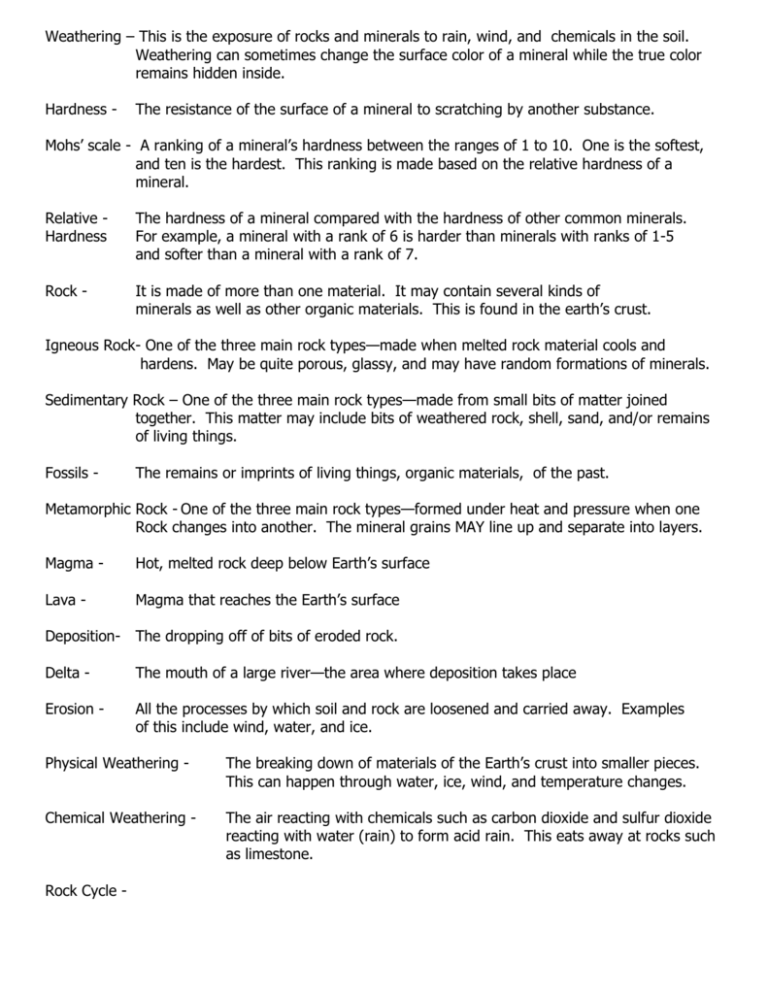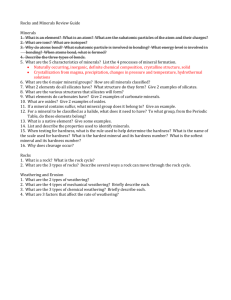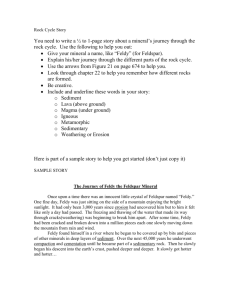Weathering – This is the exposure of rocks and minerals to rain
advertisement

Weathering – This is the exposure of rocks and minerals to rain, wind, and chemicals in the soil. Weathering can sometimes change the surface color of a mineral while the true color remains hidden inside. Hardness - The resistance of the surface of a mineral to scratching by another substance. Mohs’ scale - A ranking of a mineral’s hardness between the ranges of 1 to 10. One is the softest, and ten is the hardest. This ranking is made based on the relative hardness of a mineral. Relative Hardness The hardness of a mineral compared with the hardness of other common minerals. For example, a mineral with a rank of 6 is harder than minerals with ranks of 1-5 and softer than a mineral with a rank of 7. Rock - It is made of more than one material. It may contain several kinds of minerals as well as other organic materials. This is found in the earth’s crust. Igneous Rock- One of the three main rock types—made when melted rock material cools and hardens. May be quite porous, glassy, and may have random formations of minerals. Sedimentary Rock – One of the three main rock types—made from small bits of matter joined together. This matter may include bits of weathered rock, shell, sand, and/or remains of living things. Fossils - The remains or imprints of living things, organic materials, of the past. Metamorphic Rock - One of the three main rock types—formed under heat and pressure when one Rock changes into another. The mineral grains MAY line up and separate into layers. Magma - Hot, melted rock deep below Earth’s surface Lava - Magma that reaches the Earth’s surface Deposition- The dropping off of bits of eroded rock. Delta - The mouth of a large river—the area where deposition takes place Erosion - All the processes by which soil and rock are loosened and carried away. Examples of this include wind, water, and ice. Physical Weathering - The breaking down of materials of the Earth’s crust into smaller pieces. This can happen through water, ice, wind, and temperature changes. Chemical Weathering - The air reacting with chemicals such as carbon dioxide and sulfur dioxide reacting with water (rain) to form acid rain. This eats away at rocks such as limestone. Rock Cycle -






